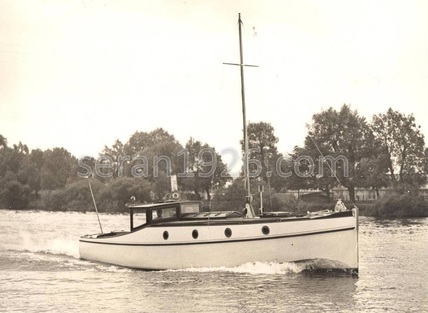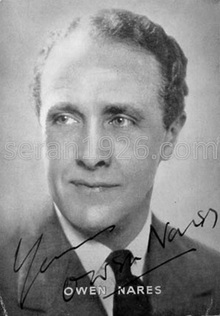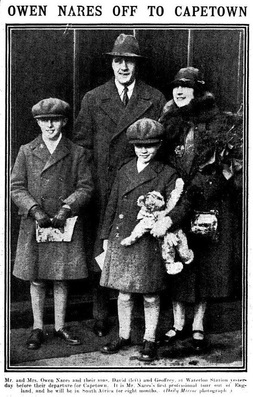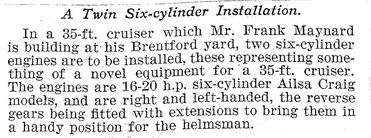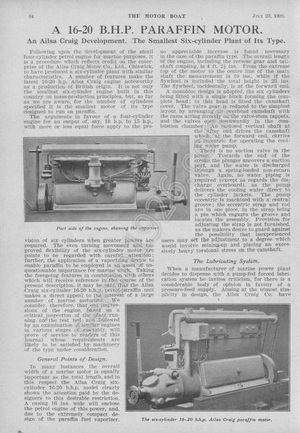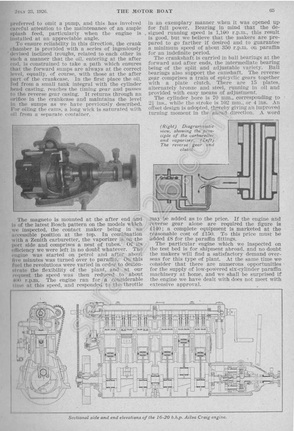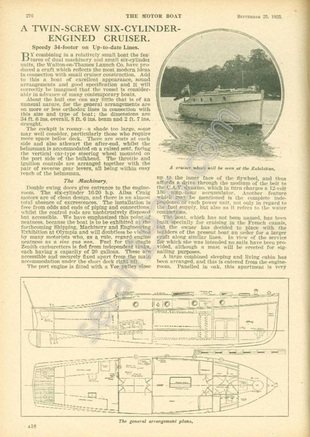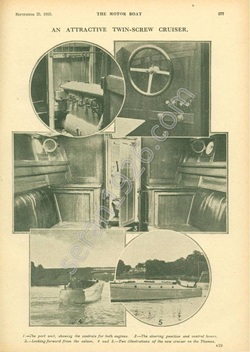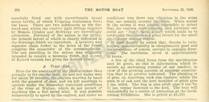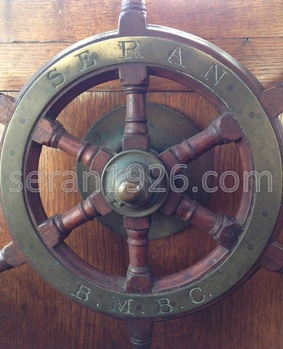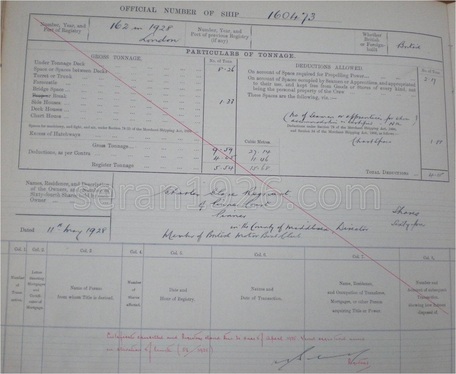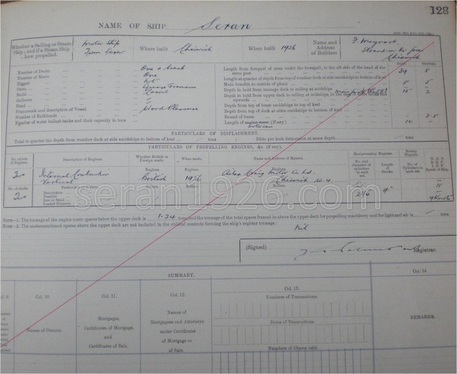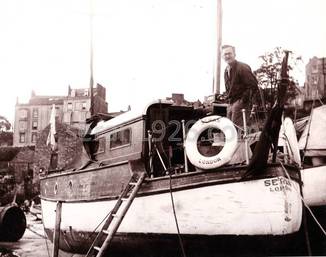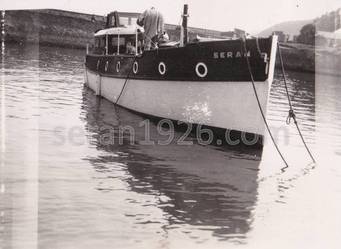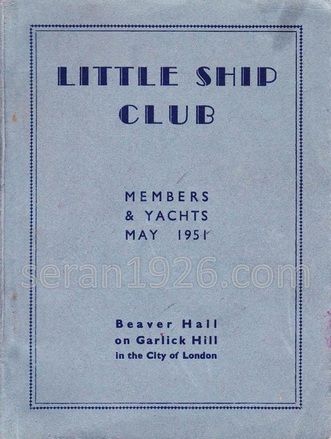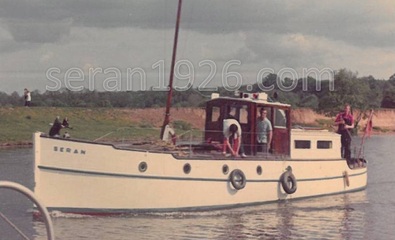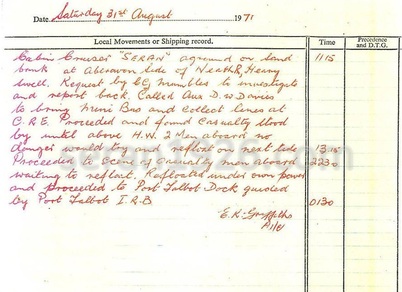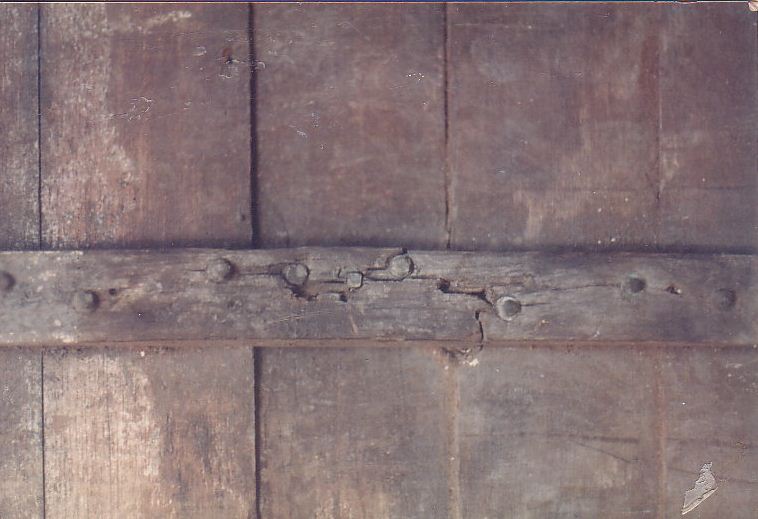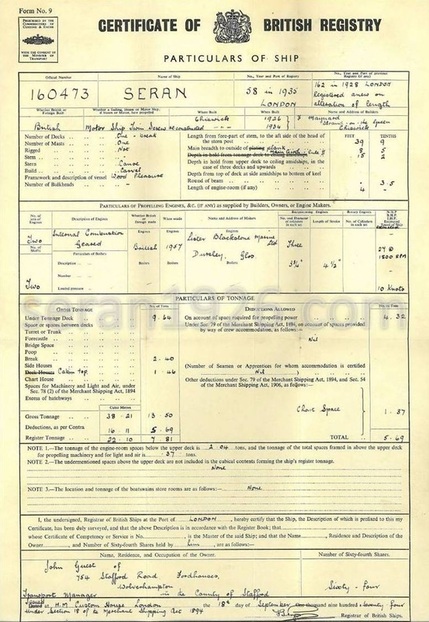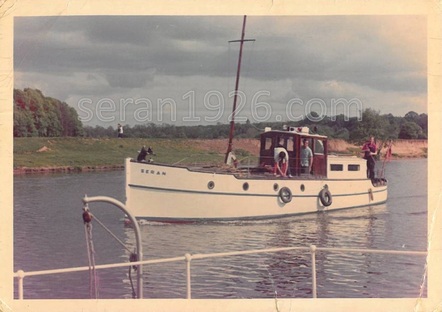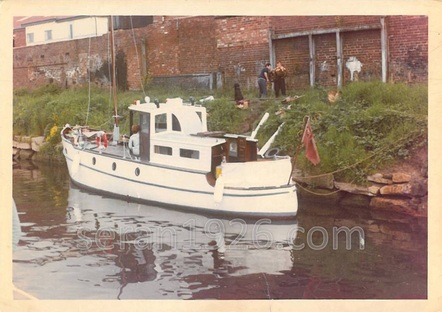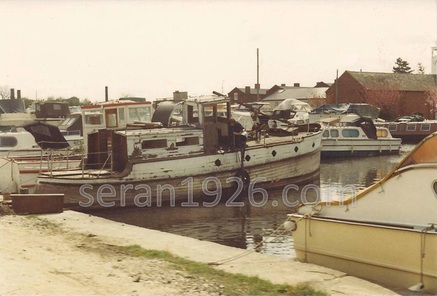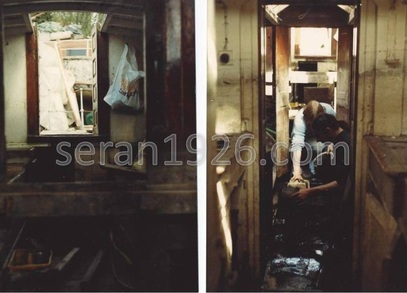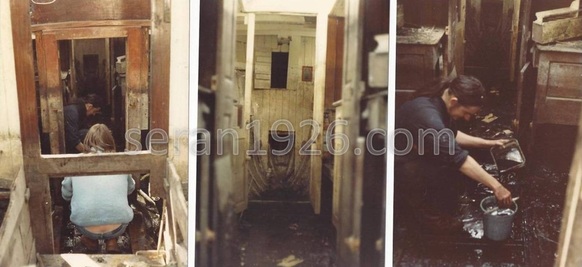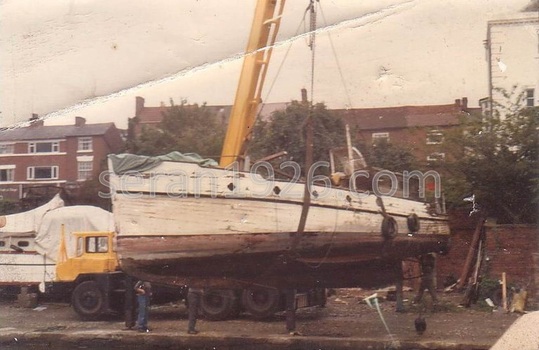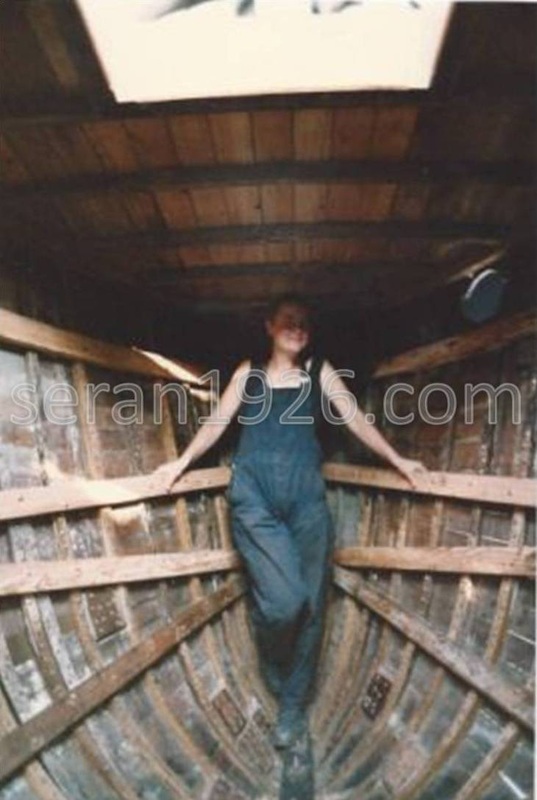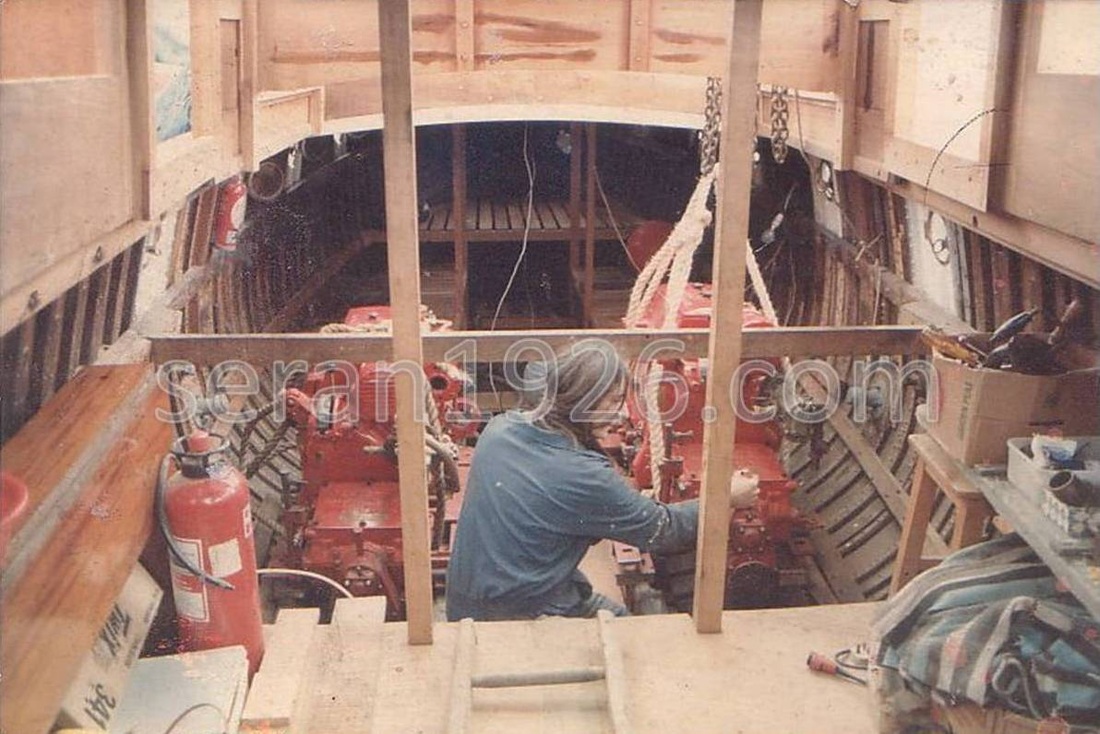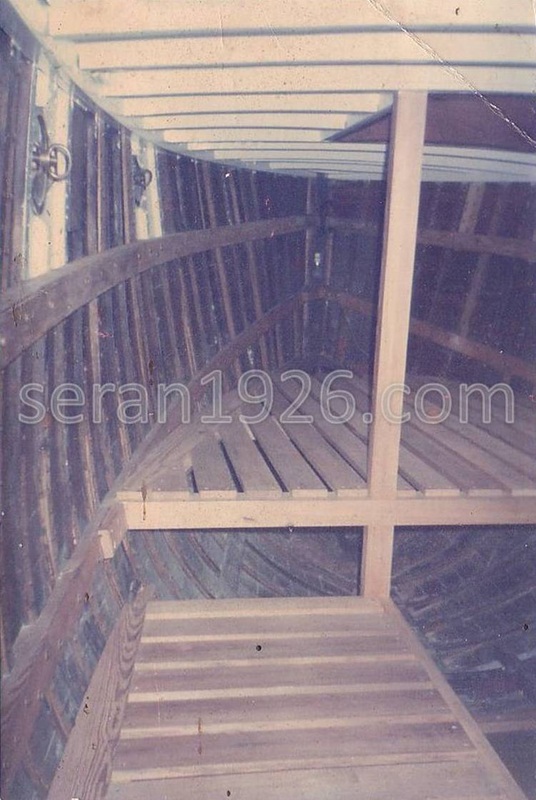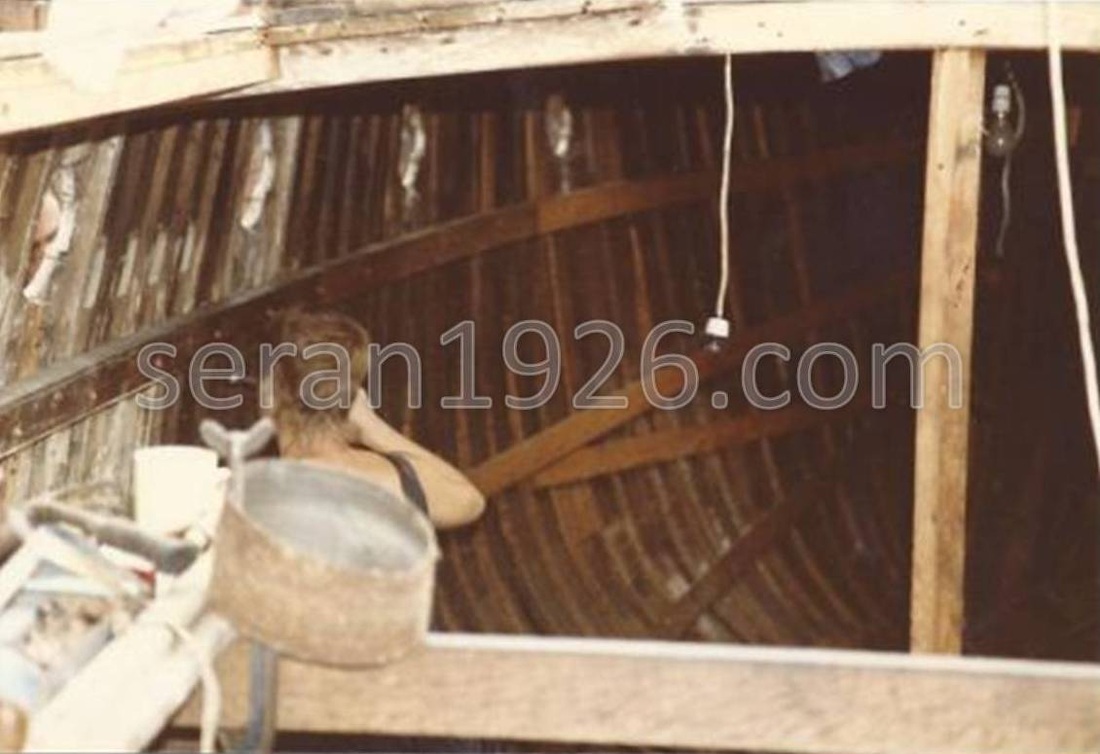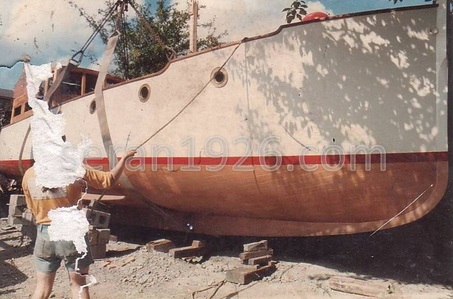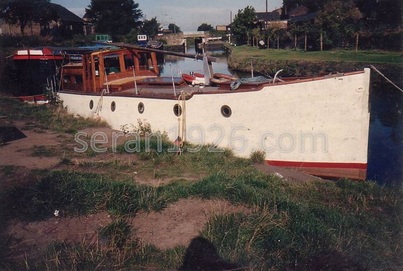A Brief History
"It is an objectionable habit to indulge in superlatives, but..."
The Motor Boat, 1926
‘Seran’
was designed by Higley Halliday M.I.N.A., the Chiswick based naval architect
and marine motor engineer and built by Frank Maynard at Strand-on-the-Green
Chiswick, between March and September 1926.
A Cryptic Name?
|
An
interesting tale passed from successive owners is that 'Seran'
was commissioned by Owen Ramsay Nares (1888 – 1943), west end
stage actor manager and matinée idol – and it's through this association
she takes her name; 'Seran' being the reverse of 'Nares'.
Nares performed with many of the outstanding actors of the era;
his looks and debonair manner made him ideally suited to the
silver screen. The development of the film industry and corresponding
growth in cinema audiences gave Nares mass exposure and during
his golden period of the 1920’s, he became a true matinée idol. In
his autobiography “Myself - And Others” (1925), he describes an idyllic
childhood at the family home, 'The Old House' in Sonning - ‘The Rose Garden
of the Thames’ - which he describes as "one of the most beautiful of
all places."
|
|
He recalls that "from the age of three and a half until I was seventeen the greater part of my life was spent at Sonning, where I literally ran wild, either in or on the river." Nares later recalls entertaining a member of the Sforza family and "had the pleasure of showing him some of the beauties of the River Thames in the afternoon."
Although the explanation (and provenance) of the name 'Seran' is
intriguing, there is no documentary evidence to link Nares with 'Seran'. It’s
notable that Halliday's original design was very much that of a river boat, as
illustrated by her shallow draft and awning over the
open cockpit. Nares did own a property at Nettlebed in the 1920’s,
approximately four miles from Henley-on-Thames and, having starred in popular West
End shows and touring productions almost without pause until January 1926, he
set off with his own company for a tour of South Africa,
not returning until October that year.
|
Design
Halliday’s
original ink line drawing and general arrangement plans for ‘Seran’ dated March
1926 have survived and it’s clear that his final design was for Charles Clare
Regnart (also known as Charles Hunter-Regnart) who, in early March 1926, was
elected President of Maple & Co. Ltd., the furnishers of Tottenham Court
Road, London. The timing would suggest that Regnart commissioned ‘Seran’ to
mark the occasion.
Her
trial run was attended by journalists from The Motor Boat magazine who
published their review in the 10 September 1926 edition, noting that “the owner
has very definitely stated his requirements.” Although appearing to be a
relatively conventional cruiser design of the period, ‘Seran’ included a
number of unusual features.
Twin Six-cylinder Engines
In particular, the yachting press were intrigued by the
installation of twin ‘L6’ 16/20-h.p. Ailsa Craig petrol engines,
which were described as “representing something of a novel equipment
for a 35 ft. cruiser.” The ‘L6’ model, introduced in late 1925 was one of
the smallest six cylinder marine motors to have been produced at the
time.
Commenting on the merits of the six cylinder engine in 1926, The Motor Boat magazine observed that “there is no question that the smoothness of running, complete absence of vibration and the general appeal of luxury and perfection of a six cylinder design, give it some points of advantage over a four cylinder type.”
Whilst
certainly novel, the installation of twin ‘L6’ engines in a 35 ft. motor yacht was not
without precedent. Interestingly, a similar cruiser built by
the Walton-on-Thames Launch Co. and reviewed by The Motor Boat in
September 1925, was designed to 34 ft. 6 ins. overall, 8 ft. 6 ins. beam
and 2 ft. 7 ins. draft (almost identical dimensions to ‘Seran’), with a
“roomy” open cockpit and fitted with twin Ailsa Craig ‘L6’ 16/20-h.p.
engines, specifically for cruising in the French canals. The Motor Boat
argued that the vessel reflected “the most modern ideas in connection with
small cruiser construction” and that the design was “considerably in
advance of many contemporary boats”. The motor yacht was exhibited at the
Shipping, Machinery and Engineering Exhibition at Olympia in December 1925
and it’s possible that this was the inspiration for Halliday’s design of
‘Seran’.
Dark Room
Another
unusual feature was the inclusion of a sink designed for
photographic purposes supplied with fresh water from the tanks. The
cabin was also designed to double as a dark room for
the development of photographic film. Regnart was a keen sea
angler (Halliday’s design also included a spacious cockpit together with
storage for rods, trawls and nets) and perhaps he intended to
develop photographs of trophy catches. Interestingly the first compact 35mm camera,
the ‘Leica I’, was released in 1925.
Construction
Halliday
instructed Frank Maynard of Strand-on-the-Green, Chiswick
to undertake the build. He had entered into partnership with Maynard in 1911
and Maynard had built the majority of Halliday’s motor yacht designs. However,
‘Seran’ appears to have been the last of Halliday’s designs built at the yard,
the partnership dissolving shortly afterwards.
Halliday
designed ‘Seran’ to 33 ft. with an open cockpit covered by awning. During
construction the length was extended by 2 ft. to 35 ft. and a teak
wheelhouse was built in place of the awning. ‘Seran’ was built to
the highest specification, 1” teak planks on oak frames, copper
fastened, with bronze fittings. The Motor Boat noted that the interior
panelling was of "a very high order."
Registration with the Port of London, 1928
Regnart
was a member of the British Motor Boat Club which, in late 1925, took
a lease on Cubitt’s dock, after which it was renamed ‘B.M.B.C. Dock’. It
seems likely that Regnart kept ‘Seran’ on the Thames during 1927, possibly
mooring her at B.M.B.C. Dock given its proximity to Maynard’s yard, taking
her on day and overnight fishing expeditions in and around the Thames Estuary.
‘Seran’
was first registered with the Port of London on 11 May 1928 with
Official No. 160473. Several months later, a number of newspapers briefly
reported Regnart’s success fishing from her in the Solent. Regnart may well
have kept ‘Seran’ in the vicinity of Southampton Water during this period,
where frequent fishing trips in and around the Solent would have been
possible.
Re-construction, 1934
In 1934 Regnart
approached Halliday to make modifications to 'Seran' and the work was
once again completed at Maynard's yard. This involved extending her nearly
5 ft. to 39 ft. 9 ins. overall with the addition of a more fashionable canoe
stern replacing the original square transom design. The area covered by the former wheelhouse and open cockpit was enclosed by a single, low rectangular cabin and a higher
bow was created to help prevent heavy water coming on board. The
twin 'L6' Ailsa Craig engines were replaced with twin four cylinder Parsons petrol
engines increasing the combined output to 56 h. p. The internal accommodation forward
of the engine room was unchanged.
Taken together,
these modifications suggest Regnart's intended use of 'Seran'
had changed from day or weekend coastal fishing trips to longer periods of
extended cruising where the increased length would enhance her
sea going qualities and where more comfortable, spacious accommodation
would be required. Her restoration in the 1980's revealed traces of copper
sheathing beneath the bilge keels hinting that 'Seran' may have
been moved to the Mediterranean - probably through the French canals - in
the mid 1930's.
Following
the modifications, 'Seran' was re-registered with the Port of London
in 1935, retaining her Official No. Unfortunately these records have
been lost or destroyed.
The Second World War
As
the Lloyd's Registers of Yachts weren't published between 1939 and 1946 it
is difficult to establish Seran's movements and ownership during this period.
There is no record of her name being changed (which was not uncommon for
requisitioned vessels) and there is no reference to 'Seran' having been
requisitioned in War Office or Admiralty records (such as the
Small Craft Service List) for Operation Dynamo or harbour patrol
duties. It therefore seems likely that 'Seran' was either laid up in Autumn
1939 and remained immobilised for the duration of the War or, less likely but
possible, that she was in neutral waters by 1939 - such as Ireland or Spain -
and, as a result, was not requisitioned for the war effort.
The River Severn and Pembrokeshire Coast
|
By
1946 'Seran' had been acquired by Geoffrey B. Wright of Belbroughton,
Worcestershire. Wright was the first of a succession of owners
spanning nearly fifty years who were, in the most
part, Worcestershire and Staffordshire based. Wright was
joint managing director of the edged tool manufacturer, William Hunt
& Sons, of the Brades steelworks, Oldbury together with his
brother Roy. He was a member of the Severn Motor Boat Club (today,
the Severn Motor Yacht Club) and, from 1948, a member of the
Little Ship Club where he would almost certainly have met Halliday.
During his ownership he re-engined 'Seran' with twin 4 cylinder Hyland Morris
petrol engines - necessitating the somewhat awkward addition of an angular wheelhouse on top of the existing cabin - increased her draught to 4 ft. and added bilge keels to improve
stability, all suggesting a greater emphasis on coastal cruising. In addition, he added a sixth porthole in the forward cabin which had previously doubled as a dark room.
|
Wright is thought to have kept 'Seran' on the River Severn, possibly at Gloucester, in the 1940's but by the 1950's she was kept at Saundersfoot harbour on the Pembrokeshire coast. Wright took her on frequent coastal cruises along the South Wales coast and was a regular visitor to Tenby harbour.
In the mid 1950’s Wright was aboard 'Seran' with three friends on a
voyage along the South Wales coast; an experience still vividly recalled
by one of the party. Having departed from Portishead,
Bristol ‘Seran’ was caught in a Force 6 gale during which she
suffered engine failure. Fortunately one of the party was an
engineer who managed to restart the engine. Subsequently, the
painter of the dinghy which was being towed, fouled the propeller and
Wright dived overboard in heavy seas to free the rope. The party were
terribly sea sick and without the comfort of lifejackets or distress
flares, were extremely relieved to finally make port in Tenby.
Whether or not this episode had any bearing on his decision, Wright parted with 'Seran' in 1956 and she was acquired by Les J. O'Connor of
Llanelli, Carmarthenshire. He had established a steeplejack and steel pipe
fabrication business with Fred Davies in 1948, trading as O'Connor &
Davies Ltd. from the Old Castle Tin Plate Works in Llanelli and in nearby Port Talbot. O'Connor installed the current
twin Lister Blackstone FR3M diesel engines in 1957 and constructed a more conventional high central wheelhouse with lower aft cabin, fitted with two single berths. He
kept 'Seran' for a period at least, in Llanelli's North Dock and she is also remembered in
Swansea harbour during this period.
O'Connor
owned ‘Seran’ for just a couple of years and she was subsequently sold to
Rupert L. Griffin of Chaddesley Corbett, Worcestershire in 1958. She is remembered on a slipway at a yard on the Hamble around this time, with all her fixtures and fittings removed and in storage. On 7 June 1958 she was recorded passing Lizard Point bound for St. Ives. In the
pre-war years, Griffin ran William Griffin & Sons (the family
business), chain manufacturers based in Cradley Heath. In 1942
William Griffin & Sons and Woodhouse Bros. joined forces to manufacture the
unique 'Integral Stud Link Chain', trading today as
Griffin-Woodhouse Ltd., specialists in offshore
moorings. Griffin owned 'Seran' until 1969 and was also the
registered owner of the Dunkirk Little Ship 'Wairakei II' in the
1960's. Throughout the 1960's Griffin was a member of the Poole Harbour
Yacht Club and so it seems likely that 'Seran' was kept on the south coast
during this period.
The Mumbles and Stourport Basin
'Seran'
was acquired by Desmond C. H. Ross of Knightwick, Worcestershire in
1969. "Dizzy" Ross was a Captain in the Raiding Support
Regiment, serving in the Adriatic 1944 - 1945, for which he
was awarded the Military Cross. It seems likely that 'Seran'
remained in the south west during his ownership, as on 31
July 1971 she was grounded on a sand bank in a heavy swell, on the Aberavon
Beach side of the River Neath near the Mumbles and, although sustaining
damage, was fortunately re-floated on the next tide. The Port
Talbot coastguard recorded the grounding in their records.
Although
'Seran' was re-floated, a number of her ribs were cracked and were not
repaired until her restoration in the 1980’s. From 1972 ‘Seran’ was no
longer recorded in the Lloyd’s Registers and it seems likely that Ross
used ‘Seran’ little following the incident in 1971. Several years later in
1974, she was acquired by John Guest of Wolverhampton. Given her condition (and
her subsequent location in 1984) it seems probable that ‘Seran’ was moved
back to the River Severn during Guest’s ownership. Not much is known of this
period but a dispute arose over unpaid license fees which resulted in Guest
removing all fixtures and fittings from ‘Seran’ and abandoning her
hull in the lower Stourport basin.
Restoration in the 1980's
By 1984, 'Seran' had sunk at her moorings in the Stourport Basin and
was re-possessed by British Waterways. She was put up for
auction and acquired by Richard & Maggie
Fee. A letter found on board led to the discovery of
the engines and original fixtures and fittings which had
been kept in storage. Here, Richard and Maggie recount how they came to
rescue 'Seran' from an untimely end in the Stourport Basin in the early 1980's:
“We had an idea that it would be great to live on a boat and so
we were looking around at old narrowboats when we came across
her. When we first saw Seran we fell in love with her. We could
see that she had been a beauty in her days. We went onboard and
could see the remains of what had been a lovely classic boat.
We
found out that she was up for tender with British Waterways
and put in a bid. Knowing nothing of wooden boats at
the time we threw in a postal tender and ending up buying
her for about £300. We had to wait a few weeks till we heard
whether our tender had been successful – it was as
if our life depended on it – how on earth could we estimate
what to offer or imagine what anyone else
could have offered! When we heard we had
been successful, we were overjoyed.
We
had the boat moved up from the middle basin in Stourport to
the top basin which is where we cleaned her out
(emptying bucket loads of mud back into the canal basin). You
could see the water line along the cupboards in the saloon
and the inside of the hull where she had been sunk
and everything was covered in dried mud.
A
letter on board led us to Mr Guest who had everything that could have been
unbolted from her in his garage (to prevent British Waterways having them)
including the engines, which were lovingly rebuilt. There were all sorts – the
portlights, the wheel, even the bronze letters for the name. What’s
more, he still had the tailor-made water and fuel tanks. Even some
bunting which I probably have got somewhere still! There was a pine mast
which we used to support a cover whilst she was under renovation. I
think it was just supposed to be for lights, not a sail. Eventually
we had her lifted out on to the hard-standing to do the work on the
hull.
When
we found 'Seran', her layout was quite different – the heads were right up
in the bows, not that there were any fittings left. Then the galley had
been behind, then the saloon, the engine room and the wheelhouse – which
was much taller and further forward than the one that Richard built and
then the back cabin. We changed the layout to suit our design and
saved and used what we could – the cupboard doors and the bulkheads, for
instance.
I
don’t know how long we spent re-building 'Seran', it completely took over
our life. It really was a labour of love. The re-construction
of the hull included re-placing 175 oak ribs, 9,000 copper nails (just
about every fastening) all the keel bolts. A new stem and forefoot was built
and we used oak re-claimed from an old church that was being demolished.
The deck was stripped and re-canvassed and re-laid, I built the new teak
wheelhouse and deck lights. We tried to use traditional techniques
relative to the age of the boat wherever possible – like a red lead putty
mix for filling the hull seams after caulking.
There was much evidence of filled rows of old copper nail holes
where copper sheathing (for warm waters) had been put on. Under bilge keels and
old fittings some of the copper remained. We used to collect every bit of
old copper, brass and bronze from the removal of cracked ribs and other
parts that needed replacing and take them in for scrap. The old wood
we burnt in the caravan and it used to be gorgeous watching the
flames with the beautiful colours as any bits of wood with copper still
left in it burnt.
I have stood on the bridge at Chiswick near Kew gardens and
looked down river to the pier head that used to be Maynard's
boatyard. 'Seran' played a big part in my life; a labour of love
if not sensibility.”
|
The Fee’s took her on river and canal trips in the Midlands
from Stourport down to Gloucester on the River Severn and on to
Sharpness on the Sharpness Canal. In 1988, they moved her from the River
Severn to the Calder and Hebble navigation in West Yorkshire (from Stourport
to Newark by lorry). In Yorkshire they took 'Seran' from
Mirfield to Goole and up to York on the tidal River Ouse. They
intended to take her to sea and through the French canals. The Fee's lived
aboard 'Seran' until 1992.
In 1992 she was sold to Steve Monks of Strood, Kent who moved
her to the River Medway where he lived aboard. In 2002, she was
sold to Mick Killoran who also lived aboard, keeping her at
Hoo Marina on the tidal Medway and taking her on
coastal voyages to Brighton and Ramsgate as well as the swales
and swatchways of the East Coast. Killoran subsequently acquired the
Dunkirk Little Ship and converted lifeboat, 'Mary Scott'.
|
'Seran'The morning summer mist rises.
The river ebbs, leaving its estuary, onwards to the sea. Birds calling . . . timeless. Their migrant ways . . . ageless. To this wild flow of natural beauty comes a work of love. Each piece of labour, joined and fashioned. Cared for. Time taken without question. There she lay, tied with rope to hold her fast. Built as strong as any castle on land. Her shape and lines calling for freedom. M. Killoran Owner 2002 - 2010 |
Return to the River Thames
After more than seventy years, ‘Seran’ has returned to the River Thames. She was acquired by her current owner in 2010 and is kept on the non-tidal Thames in Berkshire, where she is gradually being restored. She attended the Thames Traditional Boat Rally at Henley-on-Thames in 2011 and 2013.
